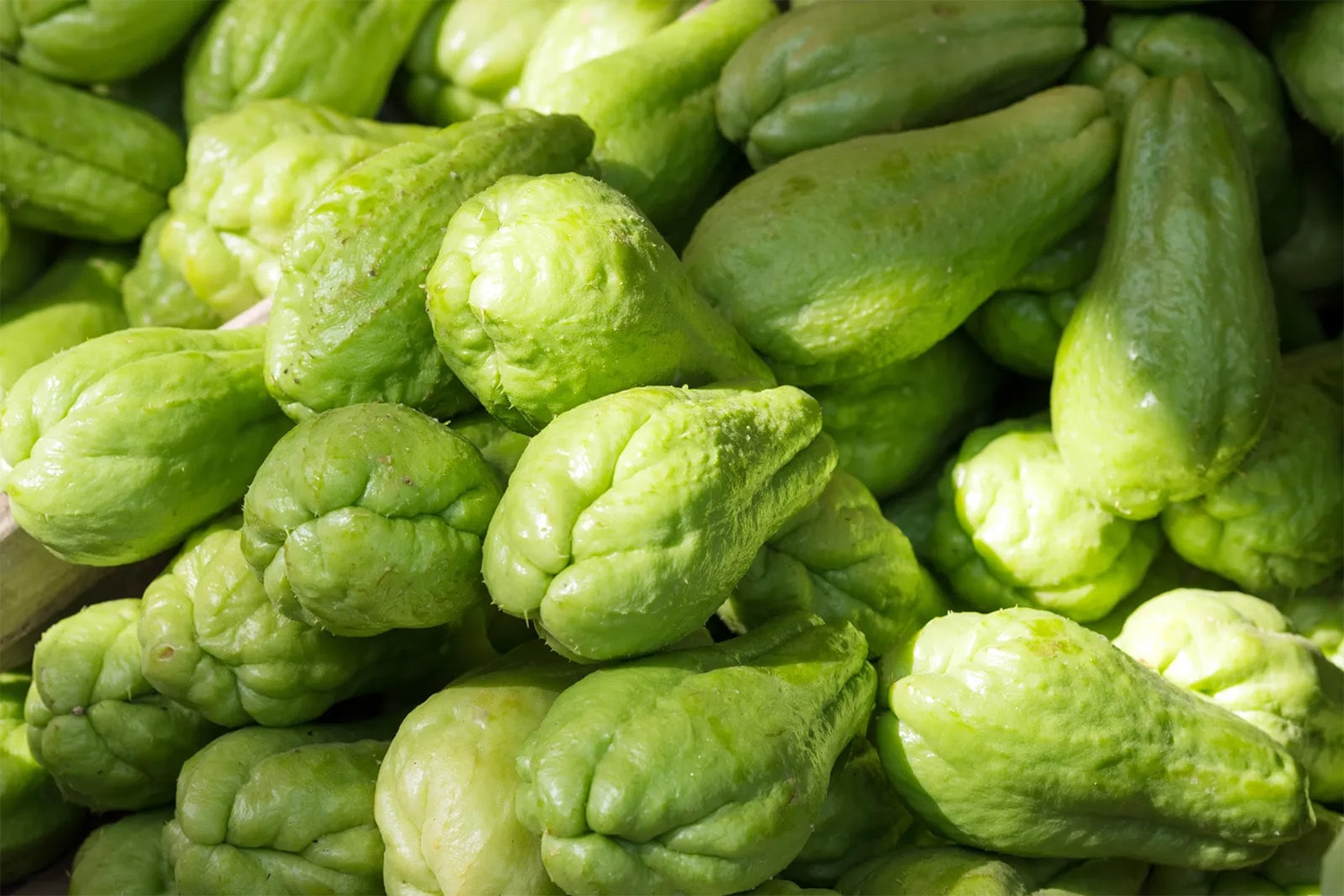
28 interesting facts about Chayote
- 👁️ 376
Chayote, a member of the gourd family Cucurbitaceae, is a versatile and nutritious vegetable that has been gaining popularity worldwide, though it’s been a staple in Mesoamerican diets for centuries. Also known as mirliton or vegetable pear due to its unique pear-like shape, chayote is not only prized for its culinary uses but also for its health benefits. This light green, wrinkly vegetable can be found climbing the trellises of gardens in warm climates, offering a bounty of fruit each season. Here are 28 interesting and informative facts about chayote that highlight its importance in the kitchen and beyond.
- Chayote is native to Mexico and has been part of traditional diets in Mesoamerica since pre-Columbian times.
- The Aztecs cultivated chayote and it was one of the several foods introduced to the Europeans by early explorers.
- Chayote belongs to the same family as cucumbers, melons, and squashes.
- The entire chayote plant is edible, including the fruit, seeds, stems, and leaves.
- Chayote fruit can be eaten both raw and cooked, often used in salads, soups, and stews.
- It is low in calories but high in fiber, making it beneficial for digestion.
- Chayote is a rich source of vitamin C, vitamin B9 (folate), and various antioxidants.
- The vegetable is also high in minerals such as potassium, magnesium, and phosphorus.
- One of the unique features of chayote is that it does not need to be peeled before cooking, as its skin is entirely edible.
- Chayote vines can grow up to 12 meters long and require a trellis or support to thrive.
- In traditional medicine, chayote has been used to treat kidney stones and high blood pressure.
- The plant produces fruit abundantly and quickly, often yielding several crops per year in tropical and subtropical climates.
- There are various cultivars of chayote, some with spines and some without.
- The leaves and young shoots of the chayote plant are commonly cooked and eaten as greens.
- Chayote seeds have a nutty flavor and can be roasted and eaten as a snack.
- The vegetable has a very mild flavor, which makes it a versatile ingredient that absorbs the tastes of the foods and spices it is cooked with.
- In Louisiana and other parts of the American South, chayote is known as mirliton and is a popular ingredient in Creole cuisine.
- In the Philippines, chayote is called “sayote” and is used in various dishes, including stir-fries and soups.
- The chayote fruit is technically a berry, according to botanical definitions.
- Chayote was one of the several foods that the Spanish introduced to the rest of the world during the Columbian exchange.
- It requires a warm climate to grow and does not tolerate frost.
- In Australian cuisine, chayote is often used as a replacement for apples in desserts.
- The root of the chayote plant, also known as chayote tuber, can be eaten similarly to potatoes.
- Chayote’s high water content makes it refreshing and hydrating.
- Some studies suggest that extracts from the chayote plant have anti-inflammatory properties.
- In parts of Asia, chayote is juiced and consumed as a health drink.
- The plant can be propagated from fruit that still contains the seed, making it easy to grow at home.
- Chayote is sometimes used as a baby food ingredient because of its mild flavor and nutrient content.
Chayote’s remarkable versatility, both in the garden and the kitchen, makes it a fascinating subject for culinary exploration and agricultural study. From its rich history in Mesoamerica to its modern-day uses around the globe, chayote proves to be more than just an ordinary vegetable. Its nutritional benefits, coupled with its adaptability in various dishes, ensure that chayote will continue to be cherished in cuisines worldwide. As people become more adventurous in their cooking and eating habits, chayote stands out as a nutritious and flavorful addition to any meal.











